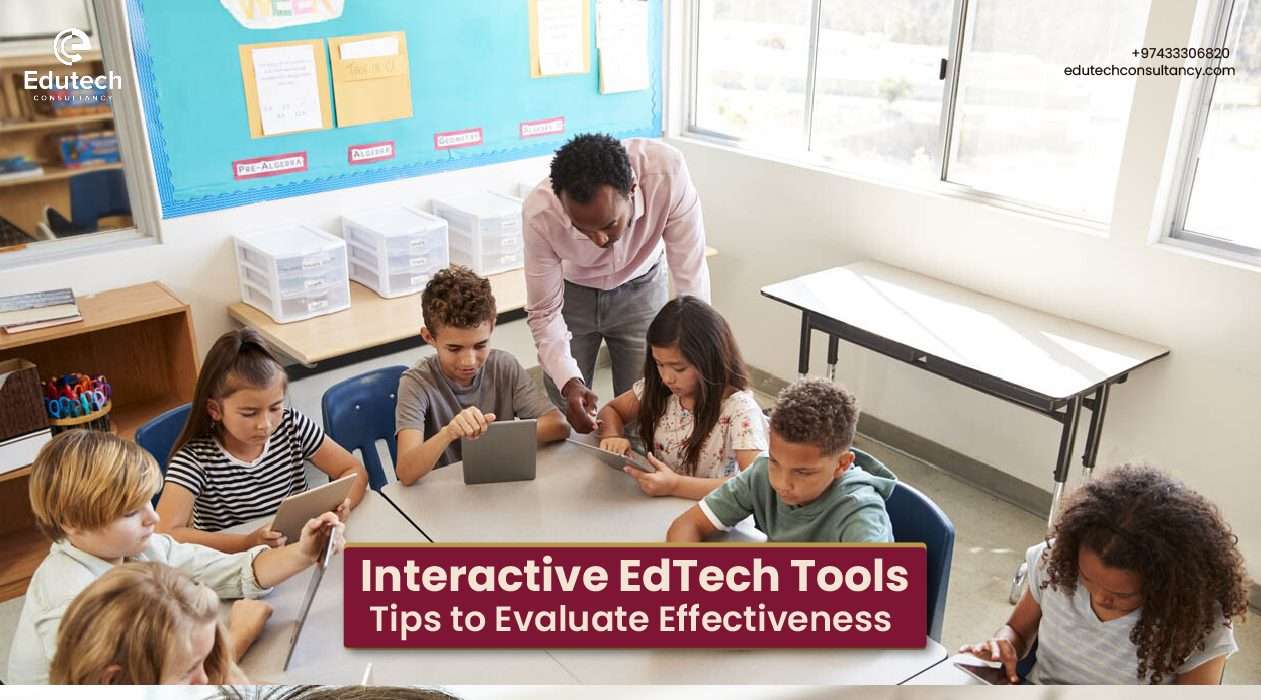Introduction
In the present world of technology, the integration of EdTech tools becomes crucial in influencing teaching and learning processes. But with a variety of resources introduced frequently, it makes it a little difficult to select those which effectively give the required results. This blog outlines some tips to evaluate the effectiveness of the interactive EdTech tools that many teachers and schools use nowadays.
Understanding the Importance of Effective Interactive EdTech Tools
While having a variety of interactive EdTech tools available, not all of these tools are equally effective. Therefore, it is necessary to evaluate if the respective EdTech tools serve the intended purpose. This is crucial for all teachers, administrators and students as it optimizes their learning process. Here is a quick list of what things to do before selecting EdTech tools:
- First of all, ask yourself, what outcomes are expected from the students?
- Secondly, define the objectives of what you want your students to learn.
- After that, specify the profound features which are important for your particular case, for instance, ease of use or assessment.

Establishing goals is the first step in the right direction of the evaluation and creates a firm ground for the effectiveness of the evaluation.
Research about the available Interactive EdTech Tools
Let us proceed with establishing our objectives and then discover available EdTech instruments. This step is important, as it enables a choice to be made between the different available possibilities.
- Check ratings, many platforms very often provide extensive overviews and comparisons.
- Read reviews or get suggestions from teachers who have experience using the tools and resources.
Avail demos, as most of them provide free trials so that you can have an overview of what this tool provides.
Evaluate Usability
Usability and accessibility is a core component when evaluating any interactive EdTech tool. Nevertheless, even the most technologically updated tool will not perform well if users are unable to use it easily.
Here are some factors that evaluate the accessibility of such tools:
User Interface:
- Is the tool convenient to use or takes a lot of effort to navigate through it?
- It is crucial to consider that a well-designed interface has a vast impact in the usage of the device.
Accessibility:
- Are all students, including students with disabilities able to use the tool?
- This serves the purpose that all students regardless of their skill level benefit equally from the application.
Technical Support:
- What types of assistance or user support are available?
- The level of technical support offered plays a critical role in making the user experience fruitful.
Run a pilot test:
- Next, it is advised to carry out a pilot test with a limited number of users.
- Ask them about their experience in using the tool in terms of how easy it was for them.
Assess Engagement of interactive EdTech tools:
Certainly, interactivity and engagement is an essential aspect of learning. Moreover, this factor emphasizes that users must find the EdTech tool lively and fun to learn. Thus, the interaction between the students can be examined through these respective interactive educational tools.
Here is how to assess the interaction element:
- Is the element of gaming available to engage the learners?
- Are there options for tests, or group assignments in the tool?
- Does the application have feedback mechanisms whereby you can provide instant feedback to students?
Tools that increase attention of students increase learning outcomes, and this assessment is an important component of your evaluation.
Measure Learning Outcomes:
For evaluating the effectiveness of the interactive educational tools, learning outcomes appears to be another critical factor to consider. This step assists in evaluating the required outcomes you want to achieve are there or not. The following steps can help you complete this process swiftly:
- Pre- and Post- Assessments to test before and after results of your students.
- Qualitative data to identify to which extent the tool may contribute to their learning.
- Performance analysis to evaluate whether there is improvement among the students.

Thus, by consistently tracking learning outcomes, you can effectively assess the efficacy of the tool in helping you reach targeted education goals. Another vital element of evaluation is the implementation and scalability.
Some additional factors to evaluate interactive EdTech tools
- How easy is it to set up?
- Which training is needed for teachers and students?
- Is the tool scalable and accommodates a larger number of students without a reduction in speed or usability?
- Is it sustainable in terms of added functions and complexity of tasks without frequent investment or rework?
Conclusion
Interactive EdTech tools offer a wealth of opportunities to enhance student engagement, motivation, and overall academic achievement. The factors mentioned above will serve as a useful guide to consider and use the tools with efficiency and needed results.
To make things simpler, Edutech Consultancy offers a list of EdTech tools for educators and schools across Qatar. We help find the right EdTech tools that will help revolutionize learning for teachers and students alike. Through careful selection of EdTech tools that positively impact the educational environment, we guide schools and teachers through a structured evaluation process and correct implementation. To know more about the EdTech tools we provide contact us at info@edutechconsultancy.com or call us at +974 3330 6820.
FAQs:
Are EdTech tools effective in improving the learning experience of students?
Certainly! EdTech tools can significantly improve the learning experience of students.
Can EdTech tools be used by educators?
Certainly! Students, teachers and parents can utilize EdTech tools.
Can EdTech tools enhance students’ motivation and engagement?
With the elements of engaging visuals and interactive interface, EdTech tools enhance students’ motivation and learning.


